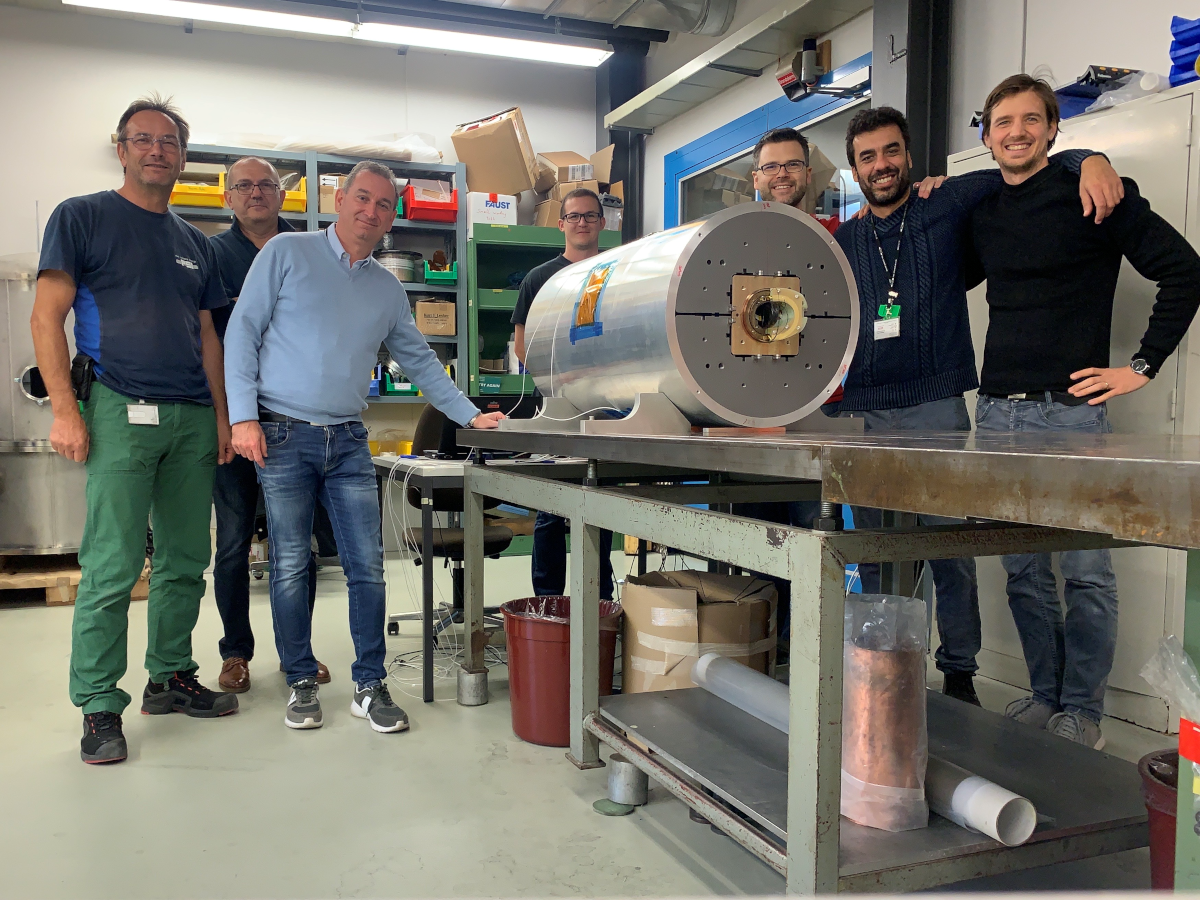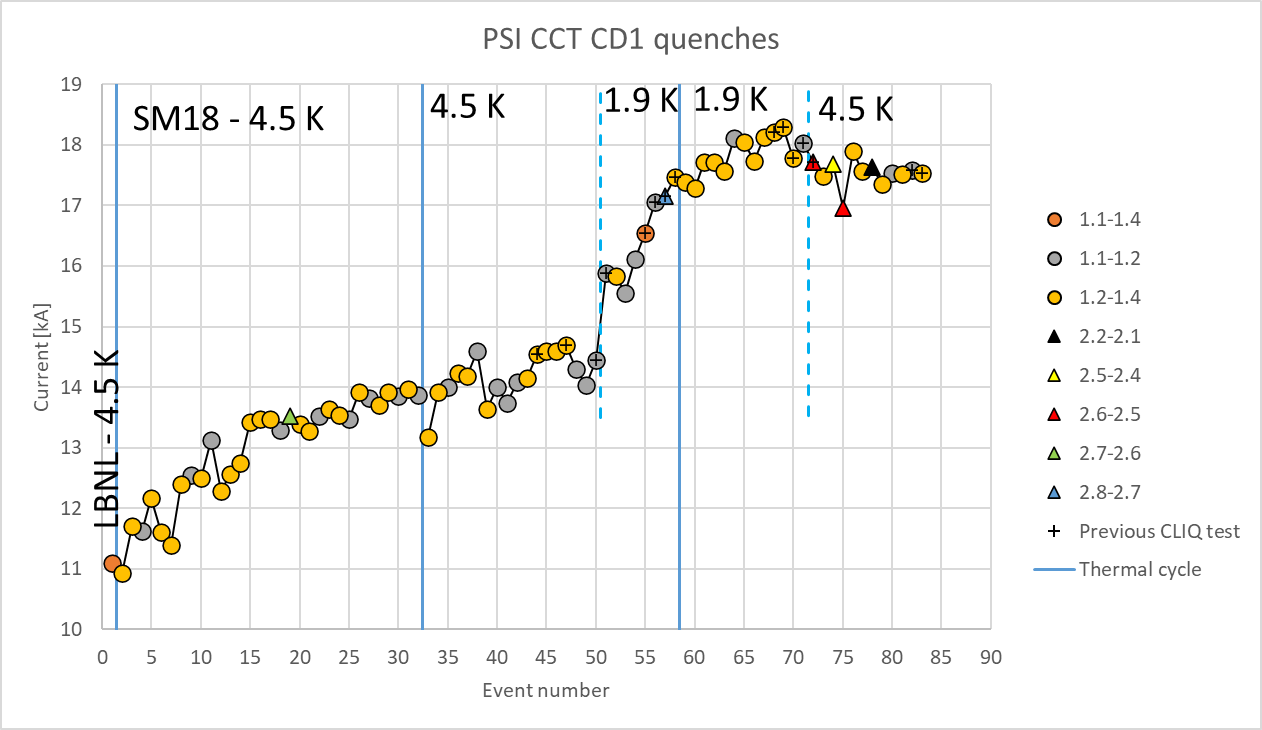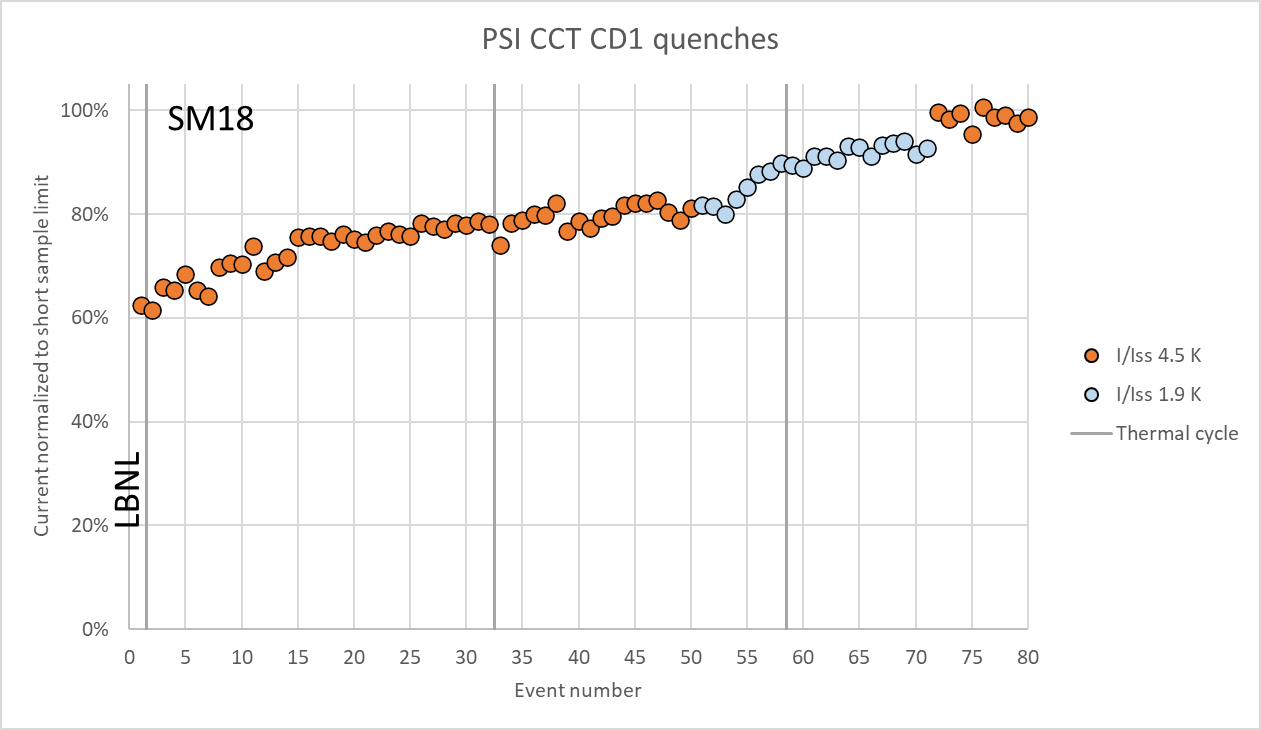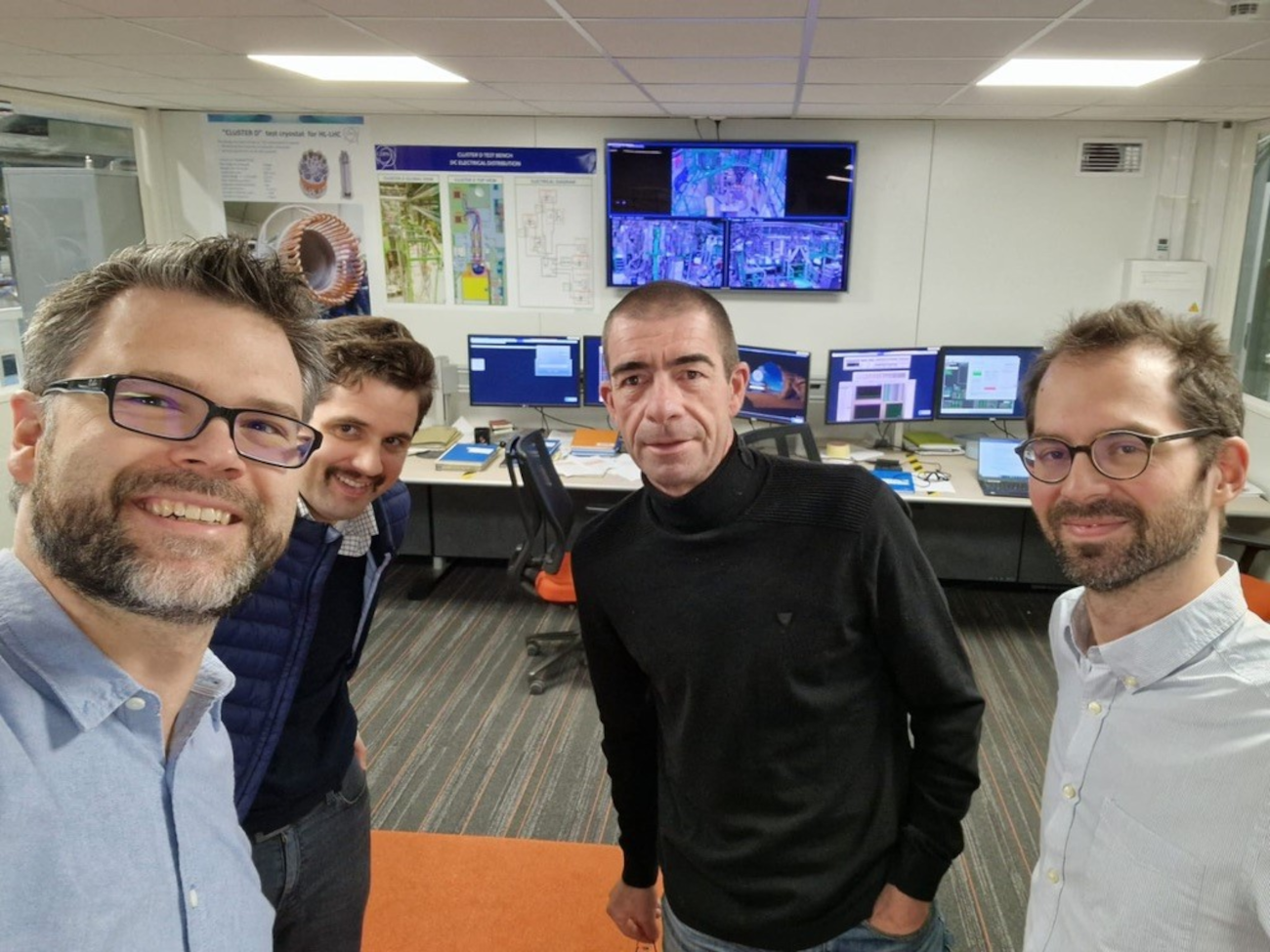As one of the first CHART projects, MagDev at PSI designed and built a canted-cosine theta (CCT) demonstrator magnet, wound from Nb3Sn conductor. Lasting from February 2017 to October 2019, the project built a magnet and established a MagDev laboratory for superconducting accelerator-magnet R&D at PSI. After a delay caused by COVID, the magnet was finally tested at CERN in November 2022, reaching a record field and performance level (for a CCT magnet) of 10.1 T in the aperture at 1.9 K and 94% of the estimated maximum performance (called short-sample limit), and 9.9 T at 4.5 K and an exceptional 100% of the short-sample limit. The magnet performance has withstood three thermal cycles and provided a wealth of data for future research.
This result was made possible by the generous support by many actors: CHART and the FCC Design Study, PSI’s magnet section, the Lawrence Berkeley National Lab, and CERN. The experience from this early CHART project has informed our work on magnet development since and leads directly into the R&D on stress-managed magnets that is pursued today.

From the left: Roland Felder, Serguei Sidorov, Stéphane Sanfilippo (leader of PSI magnet section), Christoph Hug, Michael Daly, Giuseppe Montenero, Bernhard Auchmann.

CD1 training plot, provided by Franco Mangiarotti (CERN). The markers indicate different sections of the coils, with 1.x being in the inner high-field layer, and 2.y in the outer low-field layer.

CD1 normalized training plot, provided by Franco Mangiarotti (CERN),, showing performance relative to the estimated maximum performance.

The CD1 test team in the control room of SM18 at CERN: Michael Daly (PSI), Daniel Molnar, Jean-Luc Guyon, and Franco Mangiarotti (CERN).
